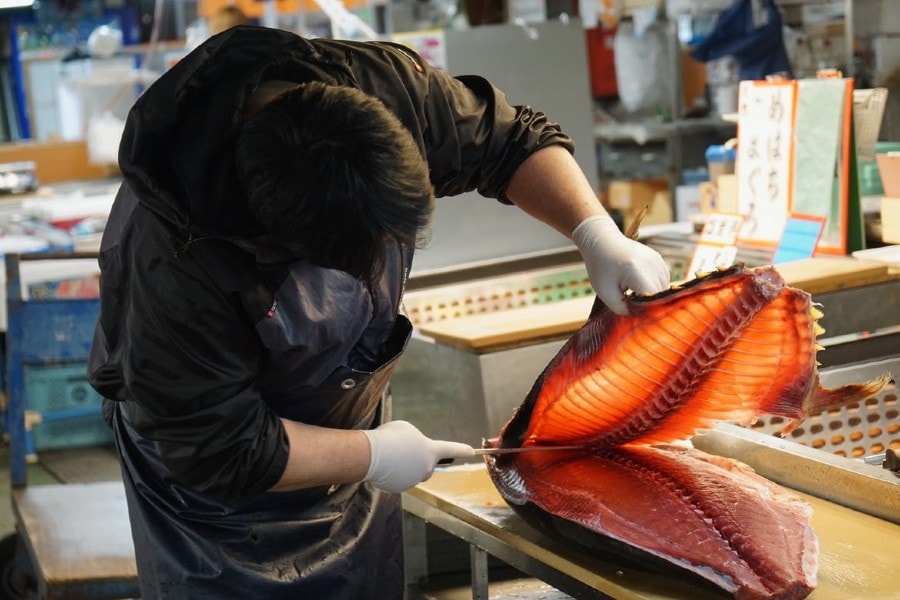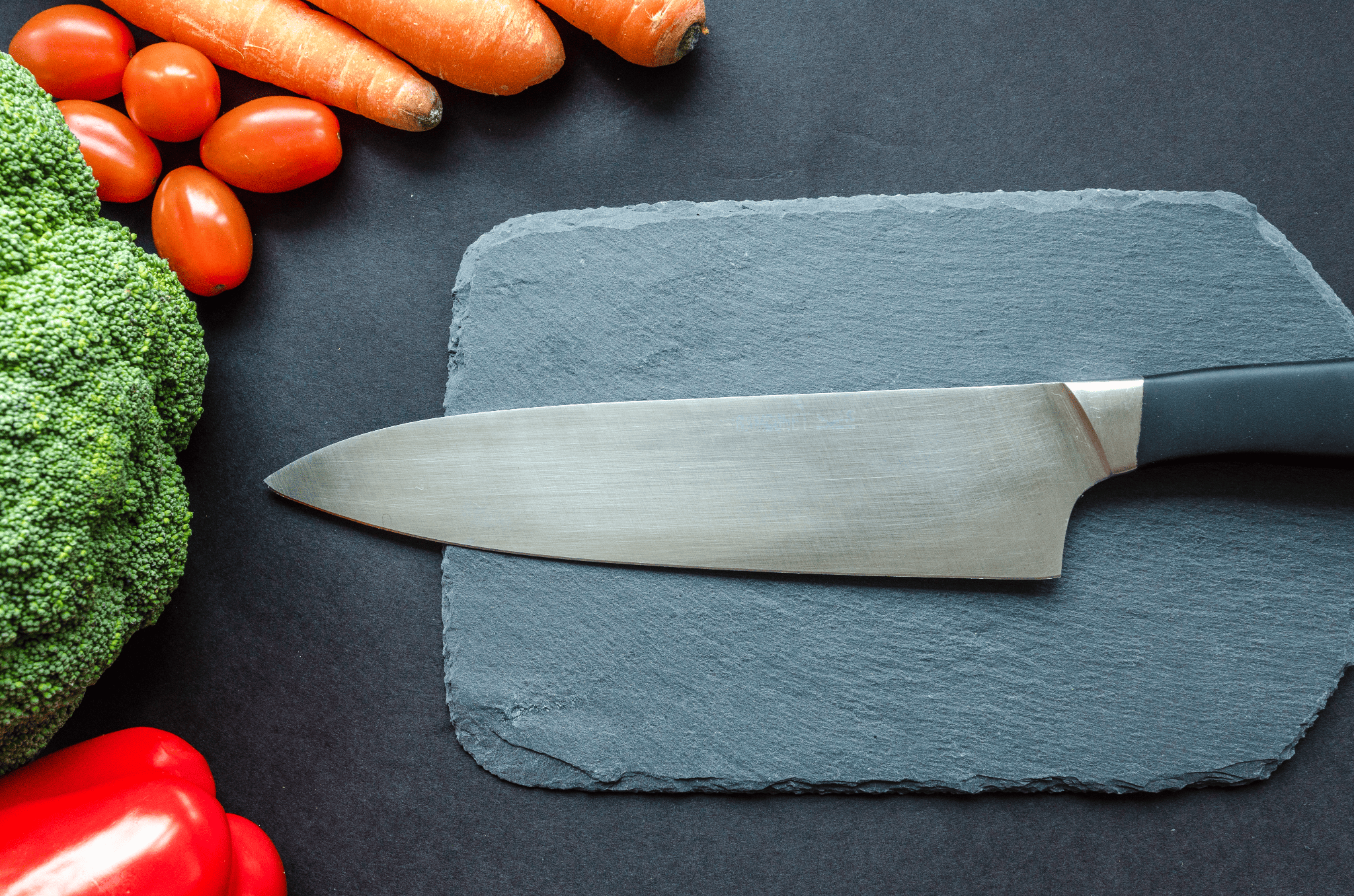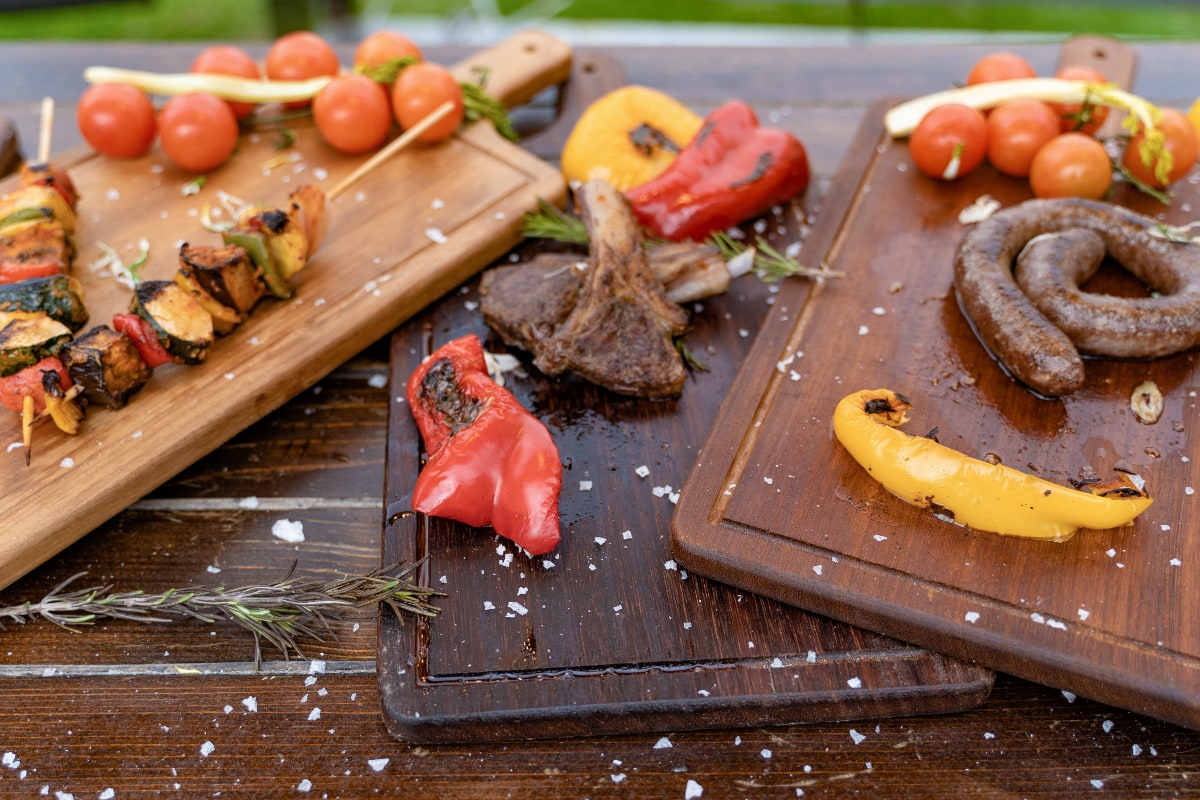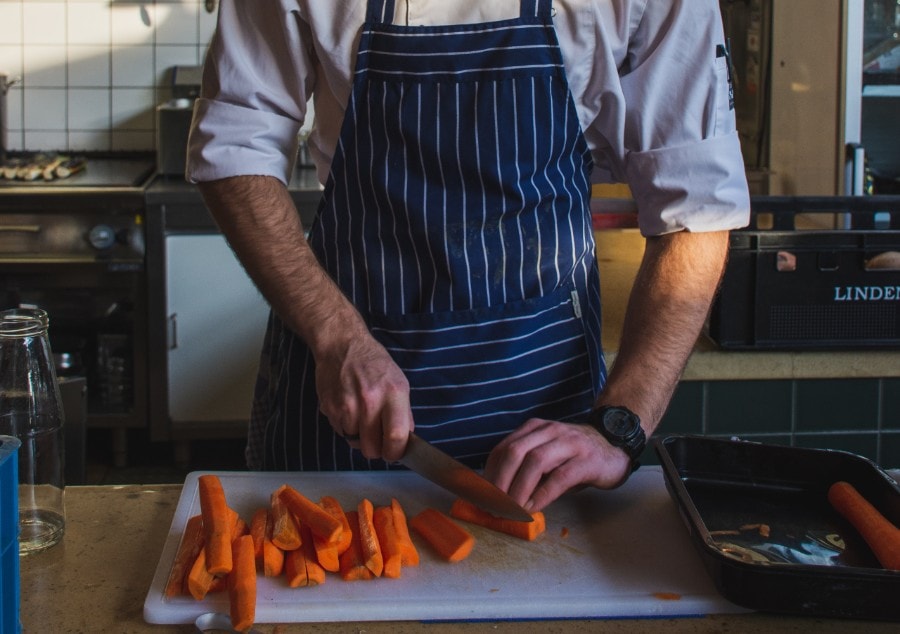Damascus fillet knives are not your average type of knives as they are frequently used by professional chefs and home cooks worldwide. So bring out your inner chef today by owning your own unique Damascus knife or, even better, the whole set of custom Damascus knives.

What are Damascus fillet knives used For?
A fish fillet knife is an essential knife for home or commercial use. It measures between 13 to 23 centimeters (or 5 to 9 inches). The size of your Damascus fillet knife you should use depends on the size of fish you want to fillet. Along with a comfortable and non-porous handle, the fillet knife is a flexible knife, sometimes known as a flex knife. The Damascus flex knife has a sharp, thin, and flexible blade to fillet your fish with precision.
Boning Knife vs. Fillet Knife
Our Damascus knives and Damascus fillet knives are produced using the same methods and quality of steel.
Similar to the Damascus fillet knives, the Damascus boning knives offer sharp and resilient blades with sturdy, comfortable and non-porous handles. They are almost similar, but can you tell them apart?
The blades of boning knives can be categorized into 2 main types, these are:
Stiff blade
These blades’ height is sometimes shorter, and the sizes range from 16.5 centimeters to 22.5 centimeters (or 6.5 inches to 9 inches). These knives are very sturdy and ideally used to cut tough meat like beef, pork, or lamb. This type of knife is also good for cutting and navigating around joints with many connective tissues such as pork hock or beef shin.
Semi-flexible boning knife
In contrast, the size of these knives ranges from 12.5 centimeters to 16.5 centimeters (or 5 inches to 6.5 inches). Compared to the stiff blade boning knives, semi-flexible boning knives present with a slightly increased blade height, making them ideal for smaller and softer types of meats like poultry and game birds.
What is Damascus Steel?
Around 900 AD, Damascus steel was invented. The name might come from the word “damas”, the root word for “watered” in Arabic, or from the city of Damascus, Syria. Since then, Damascus steel has shown superiority over other types of steel for a long time.
Pattern-welded steel is made by layering iron and steel and forging the metals together by hammering them at high temperatures to form a welded bond.
Damascus steel can be recognized by its wavy or watery patterned design, which adds a unique beauty to the knives, thus making it hard not to fall in love with them. In addition, Damascus steel is durable, hard, and can be flexible for forging the perfect fillet knife.
Benefits of Damascus Fillet Knives
Every fish lover and real foodie should know those damascus fillet knives are best suited for preparing and slicing fish. Fillet knives are also outstanding in removing flesh from bone, a process commonly known as filleting. In addition, Damascus steel fillet knives that are very sharp, thin, and flexible will give you perfect cuts without ruining your delicate fish. So whether it is cod, tuna, or salmon, you should use a fillet knife without a doubt.
The best fillet knives from Damascus steel will retain their sharpness for longer than most commonly produced quality blades, and it is also easy to maintain the sharp edge of your knife. However, since pattern-welded steel is usually relatively stiff, it is pretty uncommon to see fillet knives made out of it. As you all should know, a happy knife is a happy life.
If you’re in need of a new knife to add to your kitchen arsenal, we recommend giving our different selections of Damascus knives a try! knives.



